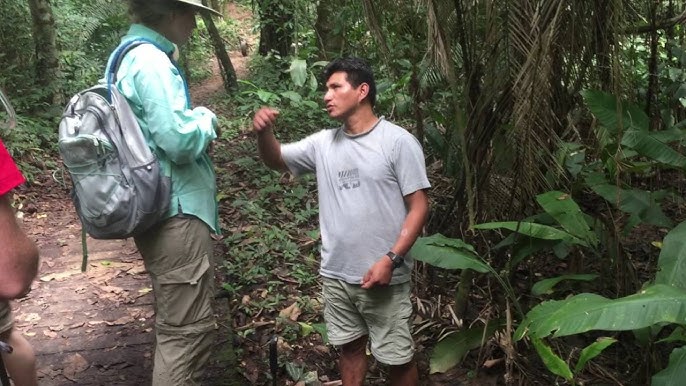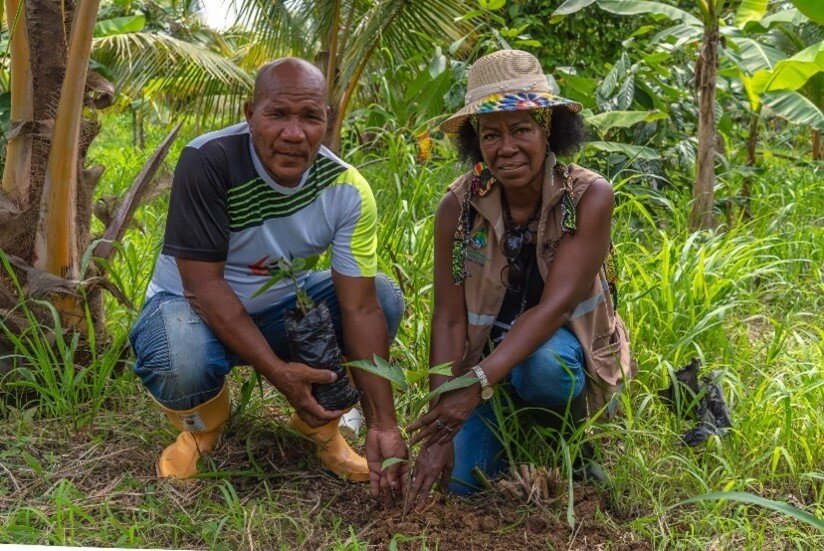A Botanist's Eye View: My Transformative Ecotour in the Ecuadorian Amazon

As an environmental science professor specializing in botany and conservation, I've spent years studying the Amazon Rainforest from afar. My blog, "The Green Lens" (thegreenlens.eco), is usually filled with scientific data and visually-rich explorations of ecotourism hotspots. However, this time, I'm stepping out of my academic shoes to share a more personal review for VistaLocation.com about my recent guided ecotour in the Ecuadorian Amazon with Rainforest Expeditions Ecuador. My goal? To experience firsthand the realities of conservation in one of the world's most biodiverse ecosystems and share it with a broader audience.
Rainforest Expeditions Ecuador stood out because of their dedication to community-based ecotourism, ensuring that local communities directly benefit from conservation efforts. While excited, I also harbored anxieties. My academic publications have documented the heartbreaking realities of deforestation, and I feared witnessing its devastating effects up close. Would the reality match the promise of sustainable tourism? My husband, Mark Olsen, a documentary filmmaker, joined me to capture the experience on film, adding another layer of anticipation and pressure. This trip felt crucial, not just for us, but for the communities and ecosystems we hoped to support.
Day 1: Arrival at El Paraiso Verde - A Sensory Overload
The journey to El Paraiso Verde, the community-run lodge, was an adventure in itself. After a flight to a nearby town and a bumpy ride in a motorized canoe, we arrived at the lodge, nestled deep within the rainforest. The moment we stepped off the boat, we were enveloped by the Amazon's embrace. The humidity was intense, easily over 90%, clinging to our skin like a second layer. The air vibrated with a cacophony of insect sounds – a symphony of chirps, buzzes, and clicks I'd only ever heard on recordings. The earthy smell of the rainforest floor, a mix of damp soil, decaying leaves, and burgeoning life, filled our nostrils.
El Paraiso Verde was a testament to sustainable construction. The lodge was built primarily with local, renewable materials – wood from sustainably harvested trees, woven palm fronds for the roofs, and bamboo for the walls. The community members greeted us with warm smiles and a genuine sense of hospitality. Our first meal was a simple yet delicious affair: freshwater fish grilled over an open fire, served with sweet plantains. It was the perfect welcome to the heart of the Amazon.
Day 2: Unveiling Nature's Pharmacy with Inti
Our second day was dedicated to exploring the medicinal plants of the rainforest with Inti, an indigenous guide from the local Kichwa community. Inti’s knowledge was astounding, a living testament to generations of accumulated wisdom. He shared invaluable insights into the forest's pharmacy.

"Our ancestors have always known the secrets held within these leaves and roots," Inti explained with a deep sense of responsibility. "It is our responsibility to protect them for future generations."
He pointed out Sangre de Drago (Dragon's Blood), a tree whose sap is used to heal wounds; Chuchuhuasi, a bark traditionally used for joint pain relief; and Wayusa, a caffeinated leaf used for energy and focus.
As a botanist, I was fascinated. I meticulously documented each plant with my Sony a7 IV, equipped with a macro lens. The low light under the dense canopy presented a challenge, and I struggled to capture the vibrant details. Dappled sunlight filtered through the leaves, creating a mosaic of light and shadow on the forest floor, making photography difficult but breathtaking. Mark also faced the challenge of filming with his Canon C300 Mark II in the dim light, but he was determined to capture the essence of this botanical treasure trove. The dense foliage made even seeing a few feet in any direction difficult. It made you wonder how anyone could possibly find anything in the area!
However, our awe was tempered by a harsh reality. In the distance, we saw evidence of illegal logging – a stark reminder of the threats facing the Amazon. The contrast between Inti’s passionate dedication to conservation and the destructive forces at play was deeply unsettling. It reinforced the urgency of our mission and the importance of supporting sustainable alternatives.
Day 3: Night Canoe Trip - A Symphony of Darkness
The night canoe trip was an entirely different experience. The river was still, reflecting the starlit sky like a dark mirror. The only sounds were the gentle paddling of our canoe and the calls of nocturnal animals. It was an inky blackness, amplifying every sound and heightening our senses.
Working together, Mark filmed the scene with his low-light beast Canon C300 Mark II, while I scanned the riverbanks with a flashlight. Suddenly, two eerie red dots appeared in the distance – the eyes of a caiman, reflecting in the light. We saw several more caimans that night, their eyes glowing like embers in the darkness. It was a thrilling, slightly unnerving, experience.

Day 4: Giving Back Through Reforestation
Participating in a reforestation project with the local community was one of the most rewarding aspects of the tour. Planting trees, feeling the mud squelch between my toes, and knowing that we were contributing to a positive change was incredibly fulfilling. It felt good to do something, even small, to reverse the damage we knew was happening.
I had a meaningful conversation with a community elder about the challenges they face in balancing economic development with environmental conservation. It's a constant struggle, he explained, to provide for their families while protecting the forest that sustains them. Community-based ecotourism offers a viable path forward, providing income and empowering them to protect their ancestral lands.
Day 5: A Taste of the Amazon
The food we experienced during our stay was an integral part of the cultural immersion. Every meal was prepared with fresh, local ingredients, sourced sustainably within the community. We savored Maito – fish wrapped in bijao leaves and cooked over embers – a dish infused with smoky flavors. Chicha de Yuca, a fermented yucca drink, was surprisingly refreshing despite its slightly sour taste. The palm heart salad was a delightful discovery, with its crunchy texture and subtle flavor. Each dish told a story of the Amazon, reflecting the community's connection to the land and its resources.
Challenges and Rewards: A Balancing Act
Traveling sustainably in the Amazon presents its share of challenges. The constant humidity, the lack of modern amenities, and the ever-present awareness of environmental degradation can be overwhelming. However, the rewards far outweigh the discomforts. The unparalleled beauty of the rainforest, the profound connection with nature, and the opportunity to learn from indigenous cultures are transformative experiences. Witnessing the dedication of the local community to preserving their heritage and protecting the environment was incredibly inspiring.
Responsible Travel Tips for the Amazon
If you're considering a trip to the Amazon, here are a few tips for traveling responsibly:
- Choose tour operators committed to sustainable practices: Look for companies like Rainforest Expeditions Ecuador that prioritize community involvement and environmental protection.
- Support local communities: Purchase handicrafts and stay in community-run lodges to directly benefit the local economy.
- Minimize your environmental impact: Reduce waste by bringing reusable water bottles and containers, and use eco-friendly products.
- Respect indigenous cultures: Ask permission before taking photos, learn about local customs, and be mindful of your impact on their way of life.
A Call to Action
My experience in the Ecuadorian Amazon was a powerful reminder of the importance of responsible ecotourism and the urgent need for conservation. Support organizations like Amazon Watch and Rainforest Action Fund, who are working to protect the rainforest and its inhabitants.
I urge you to visit the Ecuadorian Amazon responsibly and to learn more about conservation efforts. You can follow our journey and Mark's upcoming documentary on the threats to the rainforest. And please, visit my blog, "The Green Lens" (thegreenlens.eco), for more visual and scientific insights into ecotourism and conservation around the world. I leave with the knowledge that I hope to be able to return one day with more to give than when I came.